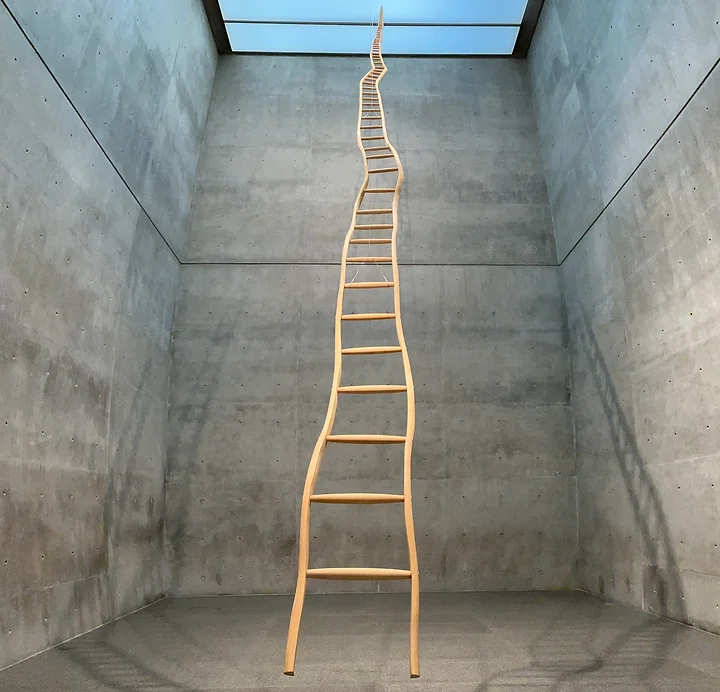redlining lingering: racial segregation
Redlining and appraisal racism, among other factors, further starved Black families of investment opportunities, loans, buying homes, refinancing and financial growth. White families became homeowners and moved to the suburbs. Black communities were pushed into cities, factory-rated neighborhoods and urban housing projects. Redlining was outlawed later during the Fair Housing Act. However, 91% of neighborhoods ranked as “A” remain middle to upper-class (in 2022) and 85% of these neighborhoods are White. (Here) (Here) Today, US neighborhoods are more segregated than before. 80% of the US metropolitan areas had higher segregation in 2019 than in 1990 (University of California-Berkeley).
A typical White American family has about 10 times more wealth than a Black family. (Here) These neighborhoods still struggle with concentrated poverty, low SES (Socioeconomic status), limited investment opportunities, employment, low business openings, food deserts, poor infrastructure, etc. These inequities further deepen the segregation and differences in Black-White socioeconomic status. Research shows that eliminating residential segregation alone would erase Black-White inequities in income, education and unemployment (Here).

Redline Lingering: Environmental Racism
The 1930s maps had multiple ranking factors. Another ranking factor was environmental stress. Areas with industrial uses were graded C or D. Soon, these neighborhoods became home to more industrial businesses and hazardous facilities.
Today, African-Americans are 75% more likely to live near commercial facilities with noise, odor and traffic pollution (Here). These neighborhoods, on average, have 50% greater air pollution than A-graded neighborhoods (Here).
Minority communities also have higher exposure to air pollution due to their mobility patterns and racial segregation. The amount of travel and the quality of transportation differ across racial groups due to differences in SES and other social and cultural factors (Here).
According to the Center for Disease Control & Prevention, the primary source of lead exposure in young children is inside the home. Racially segregated neighborhoods have higher proportions of houses built before 1978 that are merely likely to have lead-based paint, dust, pipes and plumbing fixtures rated high in lead amount. An NCBI study (Here) shows increasing blood lead levels are associated with a 2.3 times higher chance of major depression and a 4.9 times higher chance of panic disorder in young adults.
redlining lingering: food deserts
The United States Department of Agriculture defines a food desert as a low-income neighborhood with limited access to healthy and affordable food and food markets. Food deserts are a byproduct of supermarket redlining, where supermarket chains pull out or avoid investing in improvised and low-income neighborhoods.
According to the United States Department of Agriculture, about 17-19 million people lived in a food desert as of 2015 data. (Here) Millions of people in these neighborhoods live more than a mile from supermarkets with minimum access or means to a vehicle or transportation.
redlining lingering: light pollution & black luminosity
During slavery in 18th century New York, it was a law that any Black or mixed-race person needed to have a candle lantern while walking the streets in the dark and without the presence of a White person to identify slaves easily. Violating these laws had severe consequences, with up to 40 lashes.
In 2014, New York used forced illumination Omnipresence as a safety measure for high-crime neighborhoods. (Here) (Here) This strategy involved installing exterior extremely bright fluorescent lights in these neighborhoods with noisy floodlights pointed directly at windows.
These lights were part of a study to “examine the effect of different lighting installation strategies on crime reduction for 6 months”. Because “criminals do not want to engage in wrongdoing in the light” (quoted NYC Mayor de Blasio).
However, many of these lights stayed around long after the study. There are no public reports on the number of lights left behind. (Here) These policies have spread beyond NYC.
redlining lingering: racism & criminal justice system
Policing in the US goes back to the beginning of slavery. Slavery Patrols by White citizens were tasked to supervise, discipline and punish enslaved Black people. Today, fatal encounter with police is a leading cause of death among (Black) young men. About 100 in 100,000 Black men and boys are killed by police. (Here) Another study (Here) showed 66% higher fatal incident encounters with police in previously redlined neighborhoods than in A-grade neighborhoods.
Police resources are also intentionally devoured to middle-class and predominantly White neighborhoods because these areas are vital to the city’s economic health. At the same time, highly segregated neighborhoods lack investment, opportunities or empowered residents or businesses. Police resources are often stretched too thin in these neighborhoods (Here).
“Predominantly Black neighborhoods are simultaneously over-policed when it comes to surveillance and social control, and under-policed when it comes to emergency services.”

redlining lingering: epigenetics & generational blueprint
Research has shown that our lifestyle, environment and experiences can alter our genes’ behavior. Later generations could be showing signs of these changes. (Here)
Epigenetic studies introduce many more questions about the historical and continuous trauma of slavery, segregation, redlining, police brutality, and racism in Black generations.
resources:
-
Bouchard, M. F., Bellinger, D. C., Weuve, J., Matthews-Bellinger, J., Gilman, S. E., Wright, R. O., Schwartz, J., & Weisskopf, M. G. (2009). Blood Lead Levels and Major Depressive Disorder, Panic Disorder, and Generalized Anxiety Disorder in US Young Adults. Archives of General Psychiatry, 66(12), 1313. https://doi.org/10.1001/archgenpsychiatry.2009.164
-
Chepesiuk, R. (2009). Missing the Dark: Health Effects of Light Pollution. Environmental Health Perspectives, 117(1). https://doi.org/10.1289/ehp.117-a20
-
Feigenbaum, J., & Muller, C. (2016). Lead exposure and violent crime in the early twentieth century. Explorations in Economic History, 62, 51–86. https://doi.org/10.1016/j.eeh.2016.03.002
-
N. (2021, October 12). Redlining and Neighborhood Health » NCRC. NCRC. https://ncrc.org/holc-health/
-
Nadybal, S. M., Collins, T. W., & Grineski, S. E. (2020). Light pollution inequities in the continental United States: A distributive environmental justice analysis. Environmental Research, 189, 109959. https://doi.org/10.1016/j.envres.2020.109959
-
Ncrc, B. M. P. S. R. a. a. J. F. S. G. S. (2022, March 8). HOLC “redlining” maps: The persistent structure of segregation and economic inequality » NCRC. NCRC. https://ncrc.org/holc/
-
Racial segregation makes consequences of lead exposure worse. (2022, September 13). National Institutes of Health (NIH). https://www.nih.gov/news-events/nih-research-matters/racial-segregation-makes-consequences-lead-exposure-worse
-
Williams, D. R., Lawrence, J. A., & Davis, B. T. (2019). Racism and Health: Evidence and Needed Research. Annual Review of Public Health, 40(1), 105–125. https://doi.org/10.1146/annurev-publhealth-040218-043750
-
Zhang, M., & Ghosh, D. (2016). Spatial Supermarket Redlining and Neighborhood Vulnerability: A Case Study of Hartford, Connecticut. Transactions in Gis, 20(1), 79–100. https://doi.org/10.1111/tgis.12142
subscribe to our newsletter

my name is aidin belganeh and i am the founder and chief creative director at bluebeige designs. i graduated with a bba degree in marketing from southern methodist university in 2012. while working in creative marketing and ux design, i realized my passion for architecture and design. i then enrolled at new york school of interior design, nysid, to pursue a career in interior design.
i started bluebeige designs shortly after. bluebeige designs is a design studio focusing on creating beauty through simple plain spaces. bluebeige designs magazine is an extension of our brand to explore interesting topics through the lens of architecture and psychology. our articles are in scholarly writing to explore the connections between science, art, design and architecture.
our articles put a spotlight on topics that can help us understand the world around us or change the way we see or perceive it. each article is carefully curated and referenced through data-base research and studies.
0 Comments